-
Review Article
- Clonal Dynamics and Antimicrobial Resistance of blaOXA-23-Harboring Carbapenem-Resistant Acinetobacter baumannii Isolates in a Korean Hospital, 2004-2018
- Shukho Kim, Chung-Young Lee, Minsang Shin, Seong-Jun Kim, Jungmin Kim, Je Chul Lee
- Carbapenem-resistant Acinetobacter baumannii (CRAB) poses a significant clinical challenge due to its epidemic potential and resistance to multiple antimicrobial agents. In Korea, …
- Carbapenem-resistant Acinetobacter baumannii (CRAB) poses a significant clinical challenge due to its epidemic potential and resistance to multiple antimicrobial agents. In Korea, blaOXA-23 has been the predominant carbapenemase gene identified in CRAB strains since its initial detection in the early 2000s. This review analyzed the clonal evolution and antimicrobial resistance of blaOXA-23-harboring CRAB isolates collected from a tertiary hospital in Daegu between 2004 and 2018. Over this 15-year period, substantial changes in sequence types (STs), based on the Oxford multilocus sequence typing scheme, were observed. ST353 blaOXA-23-harboring CRAB isolates were first detected in 2004, followed by a predominance of ST92 in the mid-2000s. From 2012, ST191 and ST208 showed marked clonal expansion. Beginning in 2013, newer clones such as ST229, ST369, ST451, and ST784 emerged and gradually replaced earlier clonal lineages. These clonal shifts were primarily driven by allelic variation, particularly in the gpi gene. While most CRAB isolates exhibited an extensively drug-resistant phenotypes, susceptibility to colistin and tigecycline was largely retained. Antimicrobial resistance profiles varied by clone; for example, ST369 CRAB isolates were relatively more susceptible to aminoglycosides and trimethoprim-sulfamethoxazole. All CRAB isolates possessed the ISAba1-blaOXA-23 genetic structure. The 16S rRNA methyltransferase gene armA was frequently detected in ST191, ST208, ST451, and ST784 CRAB, but was uncommon in ST369. These findings highlight the ongoing clonal evolution of CRAB in clinical settings and emphasize the importance of continuous molecular surveillance. - COLLAPSE
-
Review Article
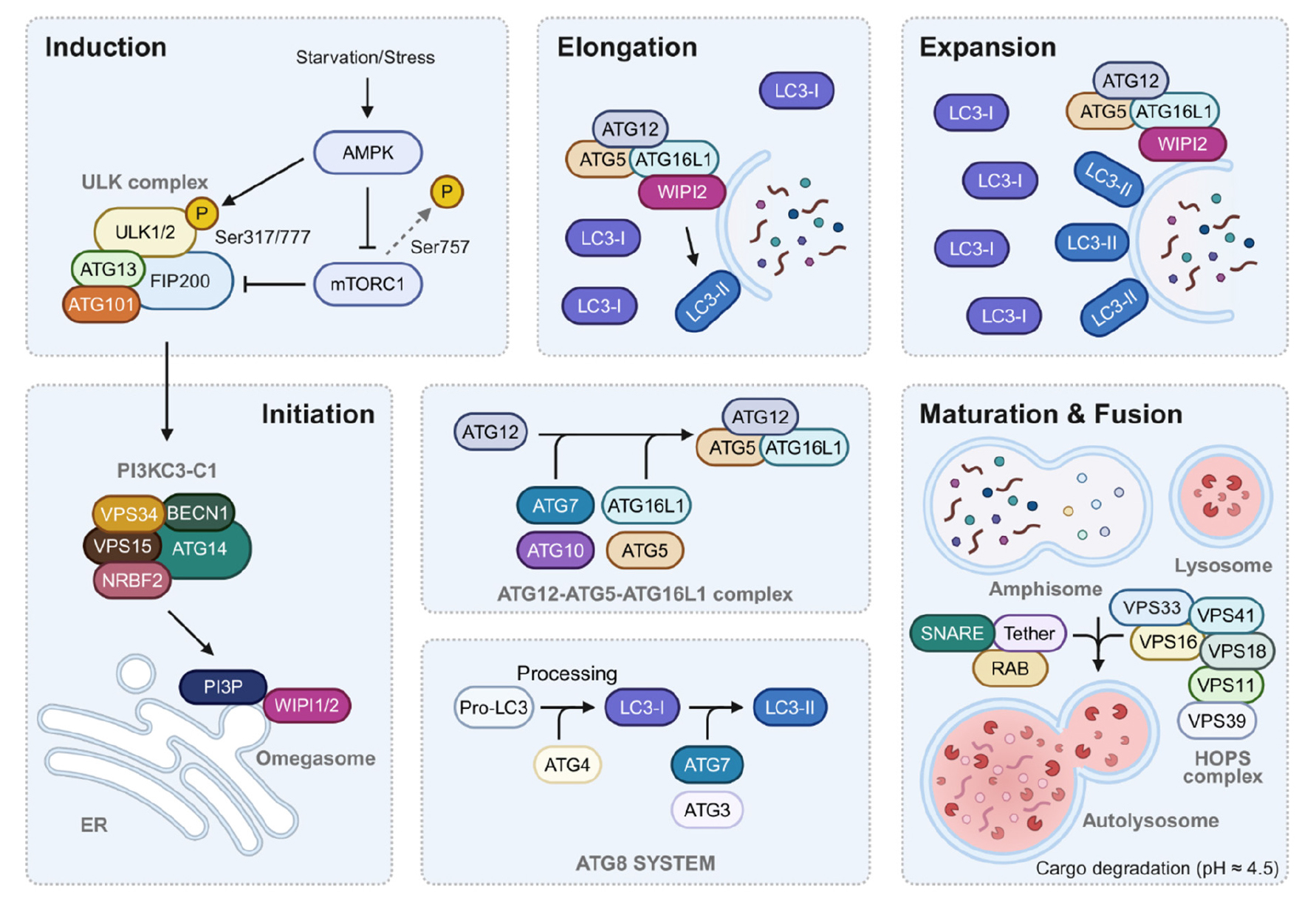
- The Role of Autophagy during Nontuberculous Mycobacterial Infection
- Young Jae Kim, Asmita Sapkota, Bomi Lee, Eun-Jin Park, Eun-Kyeong Jo
- Nontuberculous mycobacteria (NTM)—including Mycobacterium abscessus and M. avium complex—are emerging as major causes of pulmonary diseases worldwide. Treatment is hindered by the …
- Nontuberculous mycobacteria (NTM)—including Mycobacterium abscessus and M. avium complex—are emerging as major causes of pulmonary diseases worldwide. Treatment is hindered by the intrinsic resistance of most NTM to many antibiotics. Developing novel therapeutics, therefore, requires a better understanding of the host defense mechanisms against NTM. Autophagy is a lysosome- dependent pathway that degrades large macromolecular aggregates, damaged organelles, and intracellular pathogens. However, compared with M. tuberculosis, a major pathogen for human tuberculosis, the role of autophagy in NTM infection is far less well elucidated. This review explores the current understanding of autophagy-mediated host autophagy responses affecting NTM pathogenesis and intracellular homeostasis, as well as highlights several candidate agents that stimulate host autophagy and lysosomal activity to combat NTM infections. Elucidating these mechanisms could facilitate the development of more effective therapeutics for these increasingly prevalent infections. - COLLAPSE
-
Original Article

- Assessing the Diagnostic Accuracy of Soluble Urokinase Plasminogen Activator Receptor and Lipoteichoic Acid Biomarkers in Gram-Positive Bacterial Pathogen for Timely Detection and Differentiation of Colonization versus Active Infection
- Mohammed Sadeq Khalife, Sawsan M. Jabbar AL-Hasnawi, May Mohammed Ali
- Gram-positive bacteria commonly cause bloodstream and other infections in hospitalized patients, with an increasing proportion of infections associated with antibiotic-resistant bacteria. Existing …
- Gram-positive bacteria commonly cause bloodstream and other infections in hospitalized patients, with an increasing proportion of infections associated with antibiotic-resistant bacteria. Existing diagnostic methods have several limitations, such as delayed turnaround time and difficulty in distinguishing between bacterial colonization and active infection. Timely detection and appropriate antibiotic treatment are crucial for reducing morbidity and mortality. This study investigated the diagnostic potential of combining lipoteichoic acid (LTA), a molecule specific to Gram-positive bacteria, with soluble urokinase plasminogen activator receptor (suPAR), a biomarker with prognostic significance. The study aimed to develop a faster and more accurate method for diagnosing infections and differentiating colonization from active infection. A case–control study was conducted using serum samples from 62 patients with clinically diagnosed bacterial infections and from 38 healthy controls. Bacterial pathogens and antimicrobial susceptibility profiles were identified using standard laboratory procedures and the VITEK2 automated system. The participants’ serum suPAR and LTA levels were measured via ELISA. Analysis of variance was employed for group comparisons (p < 0.05), whereas receiver operating characteristic curve analysis was used to evaluate the sensitivity, specificity, and accuracy of the diagnostic metrics. Significant differences were observed in the LTA and suPAR levels (p = 0.0002 and p = 0.0007, respectively) between the infected patients and healthy controls. The area under the curve values were 99.57% and 99.41% for suPAR and LTA, respectively, indicating strong diagnostic accuracy. The sensitivity was 98.39% for suPAR and 95.16% for LTA, with corresponding specificity of 93.33% and 96.67%. These findings suggest that suPAR and LTA are promising biomarkers for the rapid diagnosis of Gram-positive bacterial infections, facilitating timely and appropriate treatment. - COLLAPSE
-
Original Article
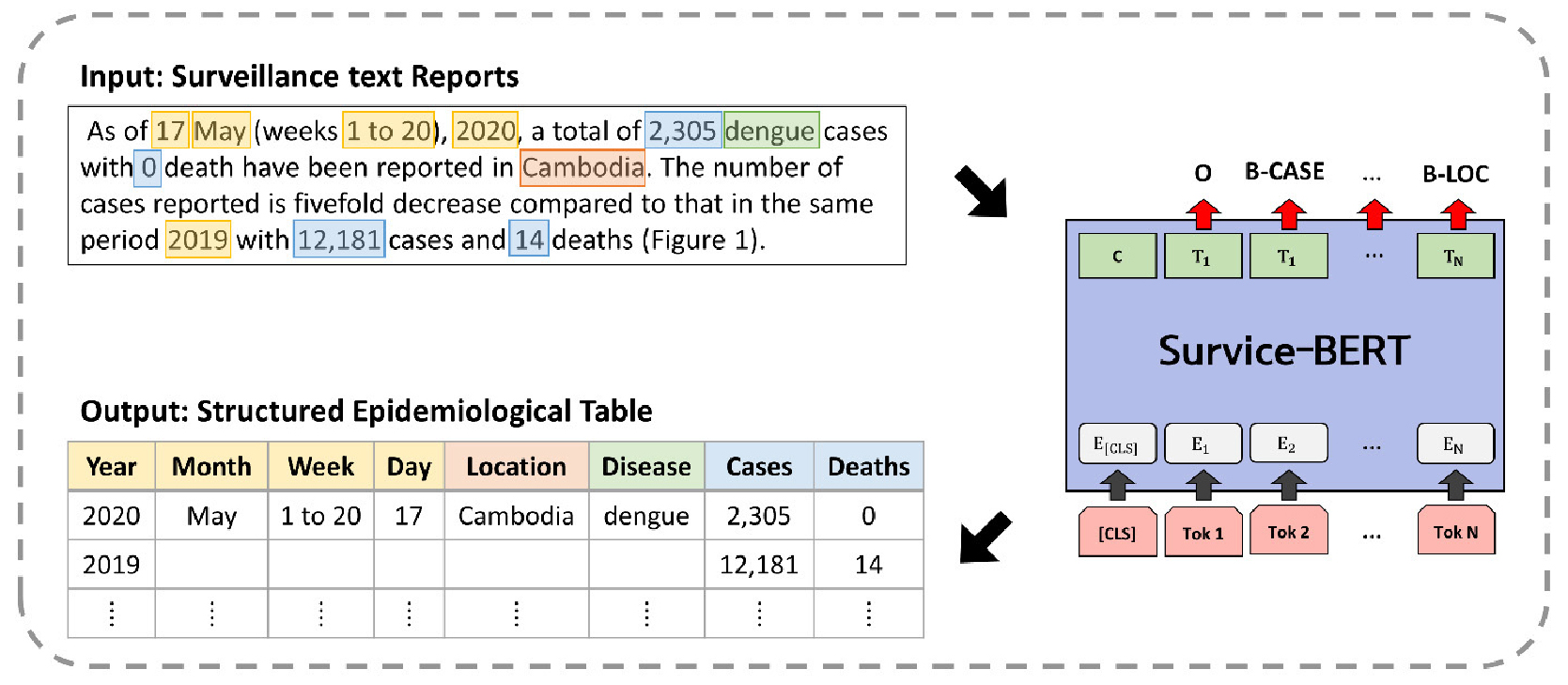
- Survice-BERT: A BERT Model for Named Entity Recognition in Infectious Disease Surveillance Reports
- Saeyeon Cheon, Insung Ahn
- Since the onset of the COVID-19 pandemic, research on infectious disease surveillance has advanced rapidly, driven by the convergence of computing technologies …
- Since the onset of the COVID-19 pandemic, research on infectious disease surveillance has advanced rapidly, driven by the convergence of computing technologies with biology, medicine, and public health. A persistent challenge in the early stages of outbreaks is the lack of structured data, which hinders timely analysis and response. To address this issue, we present a domain-specific named entity recognition (NER) dataset derived from infectious disease surveillance reports and introduce Survice-BERT, a bidirectional encoder representations from transformers (BERT)-based model fine-tuned on this dataset for pandemic-related information extraction. Survice-BERT achieves an average F1-score of 0.99, demonstrating its ability to extract information with high accuracy and support forecasting for early warning of communicable diseases. We anticipate that the model will be valuable to practitioners across multiple fields. Survice-BERT is publicly available at https://github.com/csanny/Survice-BERT. - COLLAPSE
-
Original Article
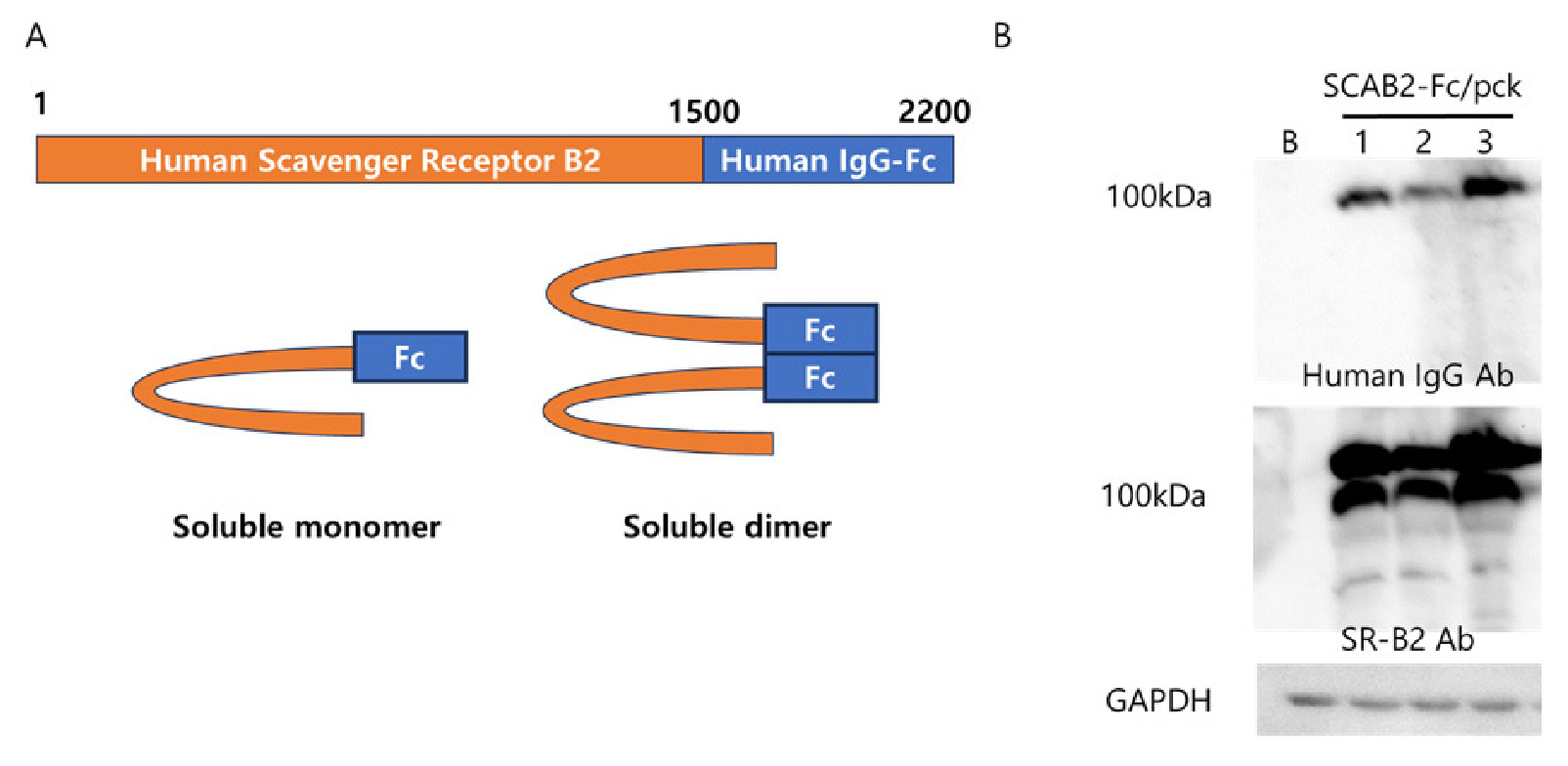
- Soluble Scavenger Receptor B2 (SCAB2) Trap is an Antiviral Agent for Hand, Foot, and Mouth Disease Viruses
- Ha-Eun Jeon, Hong-Gi Kim, Ji-Wha Shin, Byung-Kwan Lim
- Hand, foot, and mouth disease (HFMD) can show severe clinical symptoms in children and infants, such as fever, mouth ulcers, and vesicular …
- Hand, foot, and mouth disease (HFMD) can show severe clinical symptoms in children and infants, such as fever, mouth ulcers, and vesicular rashes on the palms and feet. Enterovirus 71 (EV71) is the leading cause of this disease. In this study, we investigated the antiviral effect of soluble scavenger receptor type B2 (SCAB2, CD36) to develop a new therapeutic approach for HFMD. Soluble SCAB2: Fc was generated by using the human IgG1 Fc region. The SCAB2 gene was cloned into the expression plasmid with human IgG1 Fc sequences (SCAB2:Fc/PCK). SCAB2:Fc/PCK plasmid was transfected into HEK293T cells for 72 hours. Then the cell protein was extracted, and the culture supernatant was collected. The supernatant SCAB2:Fc protein was concentrated, and its concentration was measured using a human IgG1 ELISA kit. SCAB2:Fc strongly blocked the EV71 target cell entry in a dose-dependent manner. The antiviral activity of SCAB2:Fc was observed by western blot analysis and reverse transcription PCR (RT-PCR). VP1 capsid protein and virus-positive-strand RNA were significantly decreased in 100 ng/ml of SCAB2:Fc treatment. Transcription factor, eIF4G1, and cleaved caspases3 levels were reduced considerably with SCAB2:Fc treatment. Moreover, inhibiting virus infection strongly suppressed virus replication and cell proliferation regulating MAPK signaling. The phosphorylation of p38 and ERK1/2 was significantly decreased by SCAB2:Fc treatment. These data suggested that SCAB2:Fc inhibited EV71 infection and virus replication-induced MAPK signaling activity. In this study, the antiviral effect of soluble SCAB2 was investigated to develop an EV71 treatment. Soluble SCAB2:Fc showed potent antiviral activity in vitro, and it could be a potential candidate material to use as a therapeutic drug for EV71- induced HFMD. - COLLAPSE
-
Original Article
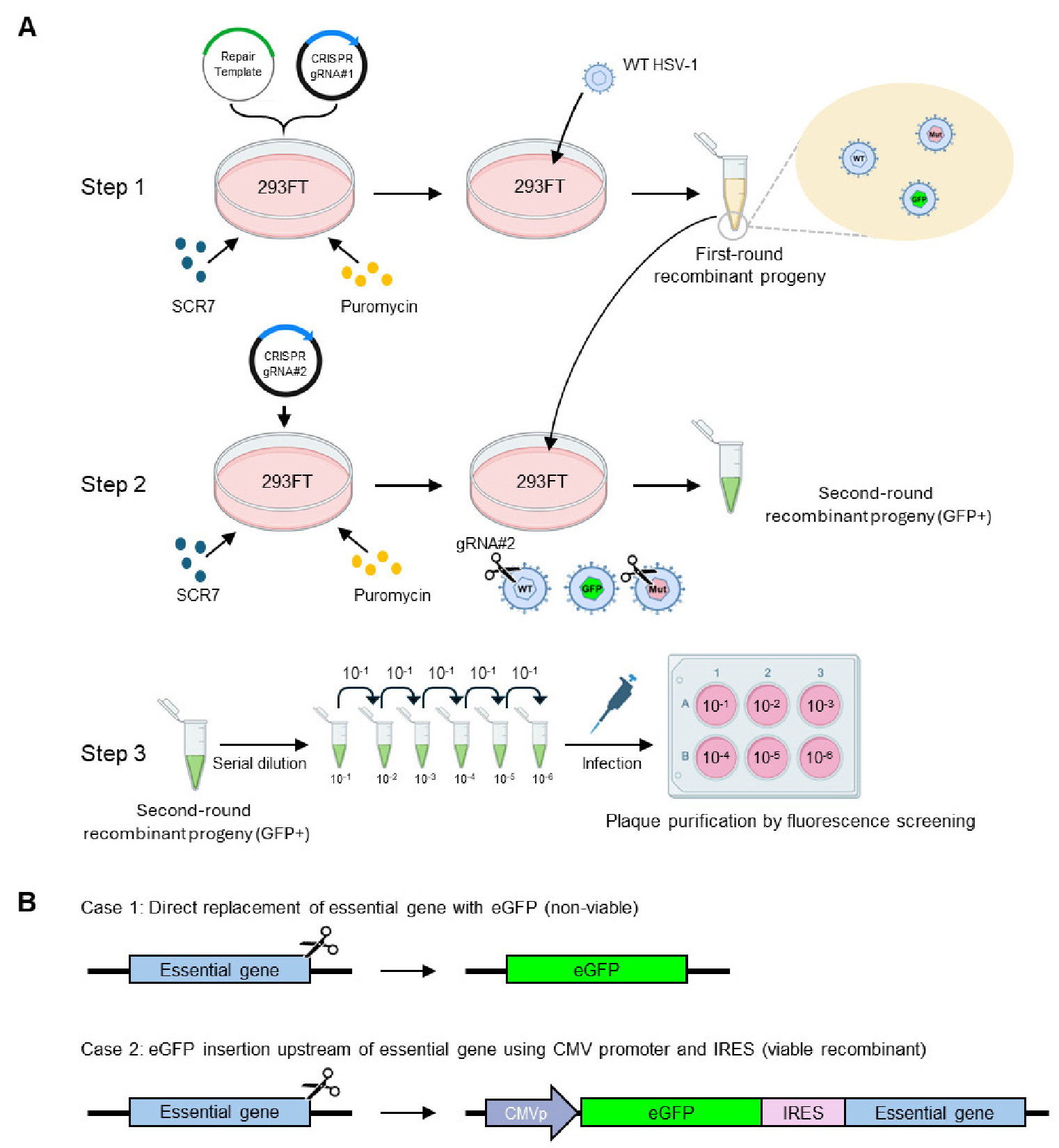
- CRISPR/Cas9-Mediated Point Mutation in Essential HSV-1 Genes Using an IRES-Based Strategy
- Tae Hyoung Kim, Kihye Shin, Eui Tae Kim
- Herpes simplex virus type 1 (HSV-1) is a large, double-stranded DNA virus whose genome encodes numerous essential genes required for viral replication …
- Herpes simplex virus type 1 (HSV-1) is a large, double-stranded DNA virus whose genome encodes numerous essential genes required for viral replication and pathogenesis. Genetic manipulation of these essential genes remains challenging because conventional CRISPR/Cas9-based editing strategies often involve initial deletion of the target gene, resulting in loss of viral viability. To overcome this limitation, we developed a CRISPR/Cas9-based GFP cassette insertion-replacement strategy incorporating an internal ribosome entry site (IRES), enabling bicistronic expression of a fluorescent selection marker and an essential viral gene without disrupting gene function. As proof of concept, we targeted the essential tegument gene UL36 and inserted a CMV promoter-eGFP-IRES cassette upstream of its ORF, allowing simultaneous expression of eGFP and UL36. The cassette was subsequently replaced with a UL36 mutant harboring a deubiquitinase (DUB)-inactive C40S substitution. This approach preserved viral viability and achieved high homology-directed repair (HDR) efficiency, allowing precise introduction of point mutations into essential genes. Our IRES-guided genome editing strategy provides a robust and versatile platform for precise manipulation of essential genes in HSV-1 and other large DNA viruses. - COLLAPSE
-
Original Article
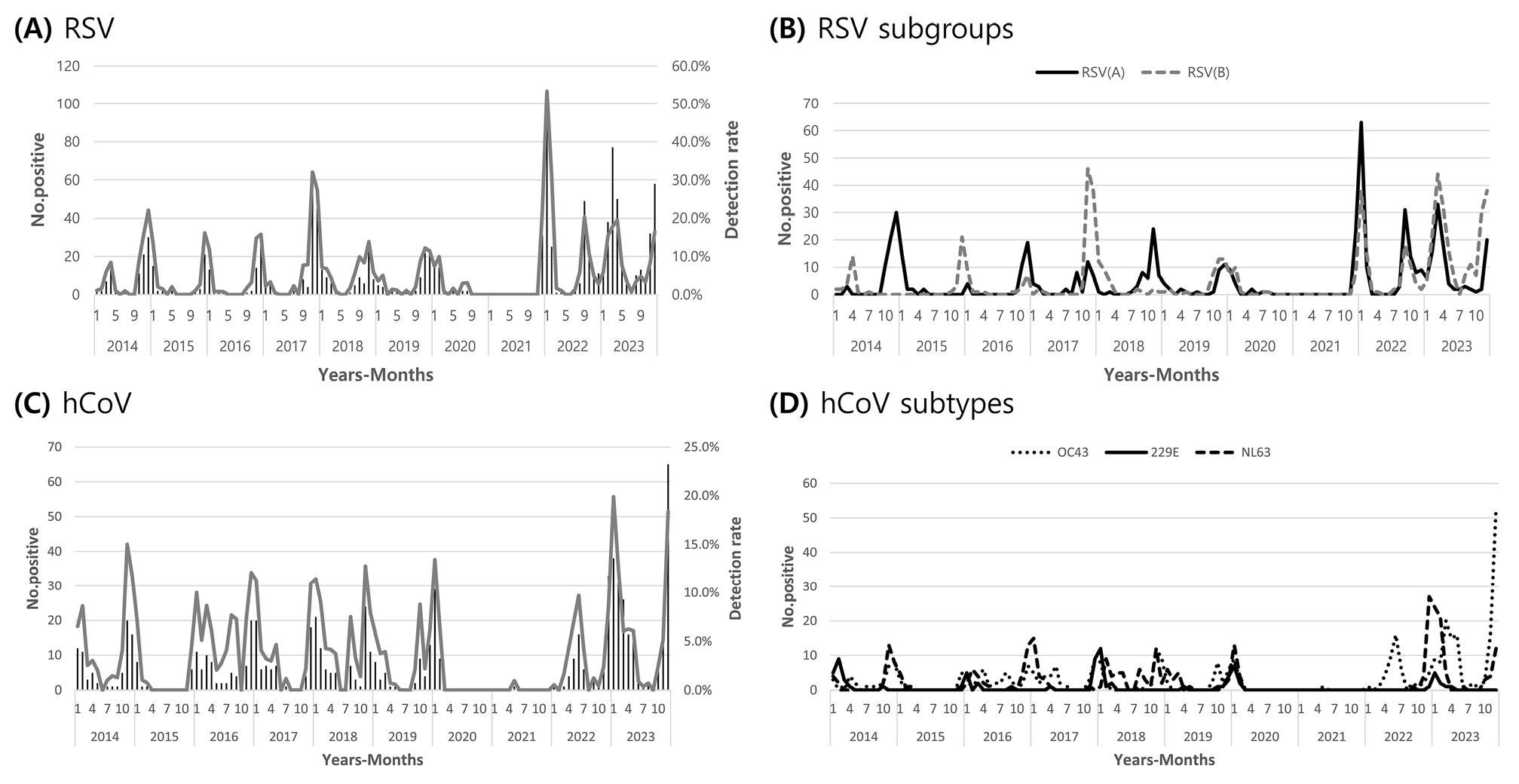
- Decadal Trends of Respiratory Viruses in Gwangju, South Korea (2014-2023)
- Sueji Han, Sun-Hee Kim, Yeong-Un Lee, Ji-eun Yun, Jeongeun Mun, Jungwook Park, Haebi Yun, Soo Hoo Kim, Cheong-mi Lee, Jong-Pil Kim, Jung-Mi Seo
- Background: Respiratory viral infections are emerging as a global concern beyond local communities. Monitoring systems for eight respiratory viruses that cause periodic …
- Background: Respiratory viral infections are emerging as a global concern beyond local communities. Monitoring systems for eight respiratory viruses that cause periodic infections in communities are being implemented in several South Korean regions, including Gwangju. In this study, we aimed to analyze the 10-year detection rate of respiratory viruses in the Gwangju area using surveillance system information. Methods: Real-Time RT-PCR was performed for each respiratory virus, samples from pediatric and otolaryngology patients in Gwangju (2014–2023) were analyzed for respiratory viruses. The Korea Influenza and Respiratory Viruses Surveillance System (KINRESS) was the primary surveillance framework for this study. Results: Respiratory virus detection rates in Gwangju followed the characteristics observed in typical Western Pacific Regions. While the seasonal nature of the virus was prominent, these characteristics disappeared during the COVID-19 pandemic. Enveloped viruses were prevalent during the COVID-19 pandemic, but the detection rate of other respiratory viruses was significantly lower. In addition, the types and patterns of virus subtypes observed before the COVID-19 pandemic were altered for human coronavirus and respiratory syncytial virus. Influenza A and B showed distinct circulation patterns, with influenza A peaking biennially and influenza B annually. Notably, A/H3N2 and A/(H1N1)pdm09 subtypes followed 2-year and 1-year cycles, respectively. This pattern was observed only before the COVID-19 pandemic, and its return post-pandemic remains uncertain. Conclusions: The findings demonstrate the significance of collecting fundamental data for the prevention and management of respiratory viral infection via such long-term studies. - COLLAPSE
Journal Informaiton
 JOURNAL OF BACTERIOLOGY AND VIROLOGY
JOURNAL OF BACTERIOLOGY AND VIROLOGY
Journal Informaiton
Journal Informaiton - close
 JOURNAL OF BACTERIOLOGY AND VIROLOGY
JOURNAL OF BACTERIOLOGY AND VIROLOGY













